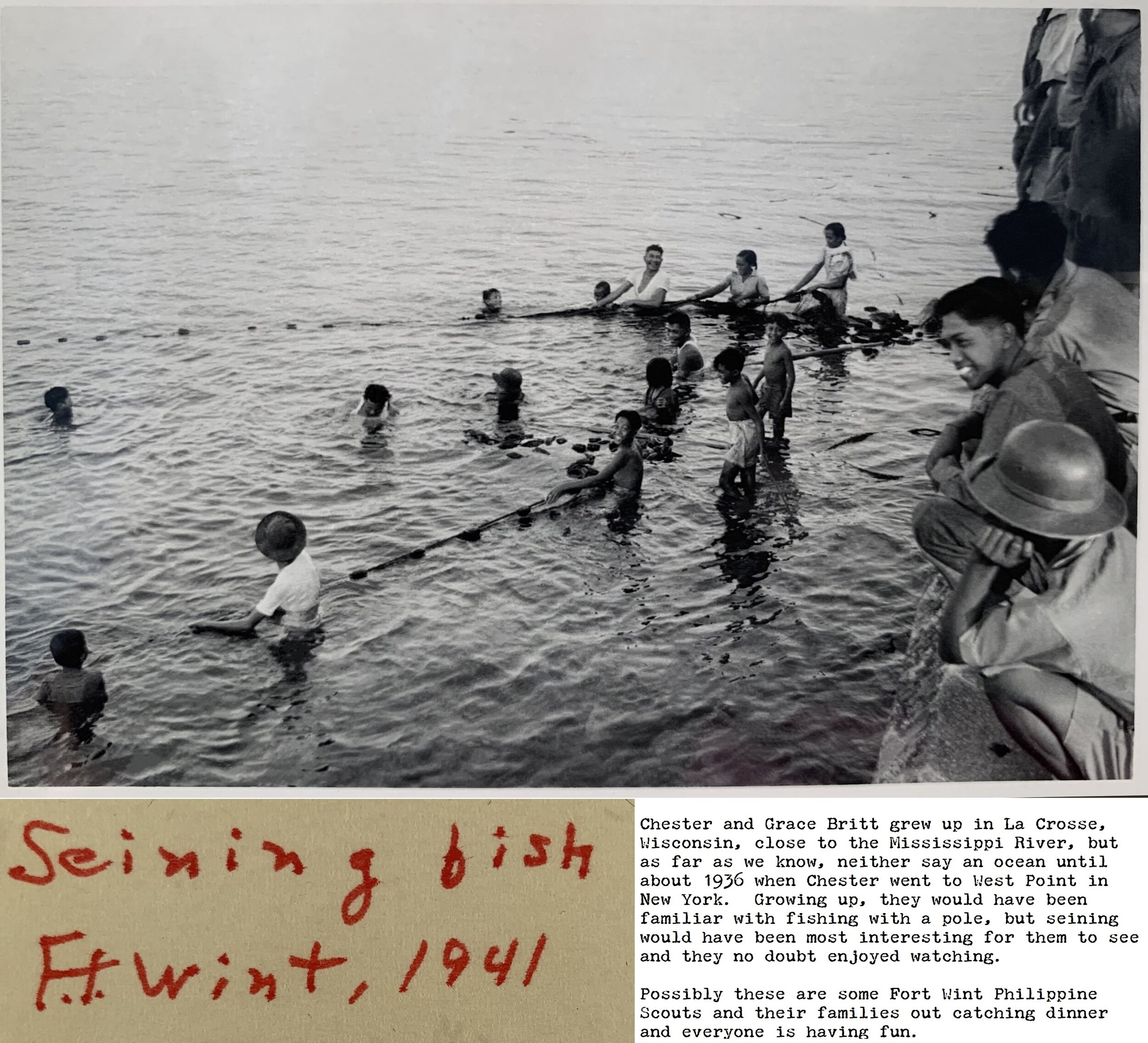In Memory of
1st Lieutenant Chester Kieser Britt
USMA Class of 1940. 92nd Coast Artillery Regiment (PS).
Special thanks to David Britt and John Duresky.
1st Lt. Chester Britt’s Philippine Scouts Wall of Heroes Poster
Chester Kieser Britt was born on June 13, 1915 in Wisconsin. He attended the U.S. Military Academy-West Point, entering on July 1, 1936. He graduated on June 11, 1940 (Cullum No. 11984) and commissioned a 2nd Lieutenant. [i]
“At least in the year before Pearl Harbor, when Chester and Grace [his wife] went to the Philippines, it was known as a prime assignment, with many of the top graduates in each West Point class asking for assignment there,” said John Duresky, who is writing a book on Lt. Britt. So on September 14, 1940, Chester and Grace sailed from New York City for the Philippines on the U.S. Army Transport Grant, making stops in San Francisco, Hawaii, and Guam. They finally arrived in Manila on November 2. [ii]
Upon arrival, the Army sent 2nd Lt. Britt to Ft. Mills, Corregidor, to serve with the 60th Coast Artillery Regiment. Sometime in December 1940, he was promoted to 1st Lieutenant and transferred to Ft. Wint, Grande Island, just outside Olongapo where there was a naval base. He was assigned to the Headquarters Battery, 2nd Battalion, 92nd Coast Artillery Regiment (PS) as well as Headquarters and Headquarters Detachment, Fort Wint, Grande Island, where he served as Post Adjutant.
In addition to his duties as Adjutant to Colonel Napoleon Boudreau, the Commander of Ft. Wint, he was a mathematics instructor for the Philippine Scout officers going through artillery training on Ft. Wint, teaching them how to compute artillery fire accurately.
To many, the Philippines was a post in paradise. The tropical sun, the warmth, the blue sea. However, there were hints that the tides of war were coming. In preparation, Grace left Manila on May 5, 1941 on the U.S. Army Transport Republic and returned to LaCrosse, Wisconsin where their son, Chester Jr. was born shortly thereafter. [ii]
Britt was supposed to receive a promotion to Captain in December 1941. But the Japanese attack on the Philippines put wartime duties in front of administrative functions. 1st Lt. Britt was detailed to Captain Alfred J. D'Arezzo, Commanding Officer of Battery D, 92nd Coast Artillery (PS), for combat operations. During the period of December 19, 1941 to January 10, 1942, Lt. Britt assisted Capt. D'Arezzo in organizing and preparing for the 155 mm gun artillery mission. This combined all of the Ft. Wint Coast Artillery troops⏤U.S. Army, Philippine Scout, and Philippine Army⏤and supplies to form the 301st Field Artillery commanded by Col. Alexander S. Quintard. And part of that mission was to evacuate Ft. Wint and make their way to the Bataan Peninsula and augment the artillery forces there. [iii]
Capt. D'Arezzo recommended Lt. Britt for assignment to the regimental staff as the Transportation, Supply, and Communications Officer. He commended Britt for his "resourcefulness and industry" for ensuring the smooth transportation of troops and supplies from Ft. Wint to Limay, Bataan⏤a distance of 135 kilometers⏤from December 21 to 24, 1942. [Ibid]
Once on Bataan, Britt established rear echelons of supply, created adequate lines of communication, and assigned and appropriated limited supplies, ammunition, and food to the batteries. Lt. Britt even commanded the "first regimental observation post" near Abucay, Bataan. By January 5, three batteries of the 301st Field Artillery were ready to fire. By January 10, the rest of the regiment was ready to cover the withdrawal of troops to Bataan. Capt. D'Arezzo later stated that Lt. Britt's "outstanding qualities as a leader, organizer, and untiring worker" aided in the "effective timely organization of the 301st FA." [Ibid] Lt. Britt later commanded Battery A of the 301st FA.
While on Bataan, the 155 mm guns of the 301st Field Artillery as well as the 86th Field Artillery (PS) supported the ground forces of the II Philippine Corps, which defended the eastern side of the peninsula. From January to April, the 301st FA constantly disrupted the enemy advance. [iv] Even at the War Crimes Trials, General Homma, the Japanese Commander in the Philippines, credited accurate artillery fire with 3,000 dead Japanese, breaking the back of the Japanese attack at Abucay and contributed greatly to a 6 week delay in taking Bataan.
On April 9, 1942, Major General Edward P. King surrendered the forces on Bataan. Lt. Britt was captured and was forced on the Bataan Death March. He survived numerous POW camps and hellships. He was liberated on August 16, 1945 at the Hoten POW Camp in Mukden, Manchuria. Prior to liberation, the Army officially promoted him to Captain on August 2. He also earned a Purple Heart Medal, the Legion of Merit, and POW Medal. He retired as a Major.
From the Britt Family Collection
Special thanks to David Britt and John Duresky. The images below give a window into Chester and Grace Britt’s time heading to and being in the Philippines before WWII. The last two images capture the full deposition that Lt. Col. Alfred J. D’Arezzo (the former CO of Battery D, 92nd Coast Artillery (PS)) gave, which described Lt. Britt’s extraordinary leadership during WWII.
Sources:
[i] Branham, Charles N. “Class of 1940.” Biographical Register of the Officers and Graduates of the U.S. Military Academy, from 1802 to 1950, by George W. Cullum, IX, 1950, p. 1067.
[ii] D'Arezzo, Alfred J. “Certificate.” Received by U.S. Army, 1946.
[iii] Duresky, John and David Britt. Sgt Laurente on Fort Wint 1941, 2020.
[iv] Young, Donald J. The Battle of Bataan: a Complete History. McFarland & Company, 2009, pps. 110, 147.










